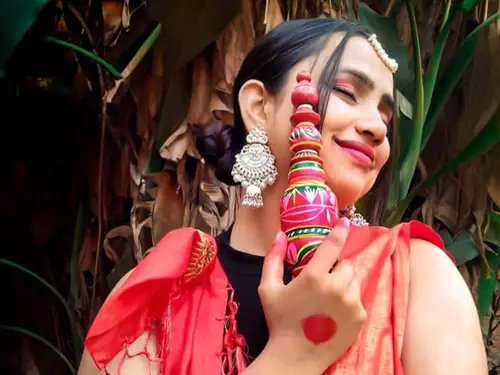
The Significance of Gachkouto in Bengali Weddings
By Meenakshi G on January 29, 2025
A Bengali wedding is full of rituals, symbolism, and deep cultural significance. One such tradition is the Gachkouto, an essential item used by the bride throughout the wedding ceremonies. While it may seem like a simple object, its meaning is deeply rooted in Bengali customs and beliefs.
What is Gachkouto?
The Gachkouto is a small red and gold container, traditionally made of metal, clay, or wood. It usually contains sindoor (vermilion), durba grass, and rice, symbolizing prosperity, longevity, and fertility. The bride holds this container in her hand during various wedding rituals.
Why is Gachkouto Important?
The Gachkouto represents a bride’s transition into married life and the blessings she carries into her new home. Here’s why it holds a special place in a Bengali wedding:
- Symbol of Prosperity – The rice inside the Gachkouto signifies wealth and abundance. It is believed that the bride will bring prosperity to her new family.
- Longevity and Blessings – Durba grass is associated with longevity and well-being, representing the couple’s long and healthy life together.
- Marriage and Commitment – The sindoor inside the Gachkouto is a sacred marker of a married woman in Hindu traditions. It signifies her commitment to her husband.
- Cultural Identity – This small item holds immense emotional and cultural value. It connects modern Bengali weddings to centuries-old traditions.
When is Gachkouto Used in a Bengali Wedding?
The Gachkouto plays a role in several key wedding rituals:
- Saat Paak and Subho Drishti – During this ritual, the bride covers her face with betel leaves and circles the groom seven times. She often holds the Gachkouto during this time, symbolizing her blessings.
- Sindoor Daan – At the end of the wedding, the groom applies sindoor to the bride’s forehead, and the Gachkouto holds this sacred powder.
- Post-Wedding Rituals – The bride may carry the Gachkouto to her new home, emphasizing her role in bringing fortune and happiness to the family.
Modern Adaptations of Gachkouto
While the traditional Gachkouto remains significant, modern Bengali brides have adapted it in unique ways:
- Some opt for designer Gachkoutos made of silver or gold to match their wedding aesthetics.
- Instead of traditional materials, personalized Gachkoutos with engraved initials or wedding dates are becoming popular.
- In some weddings, the bride’s family gifts an ornamental Gachkouto as a keepsake to symbolize their blessings.
Conclusion
The Gachkouto is more than just a small container—it is a symbol of love, prosperity, and tradition in Bengali weddings. As customs evolve, this cherished object continues to hold deep meaning, connecting brides to their cultural roots. Whether traditional or modern, the Gachkouto remains an irreplaceable part of a Bengali bride’s wedding journey.